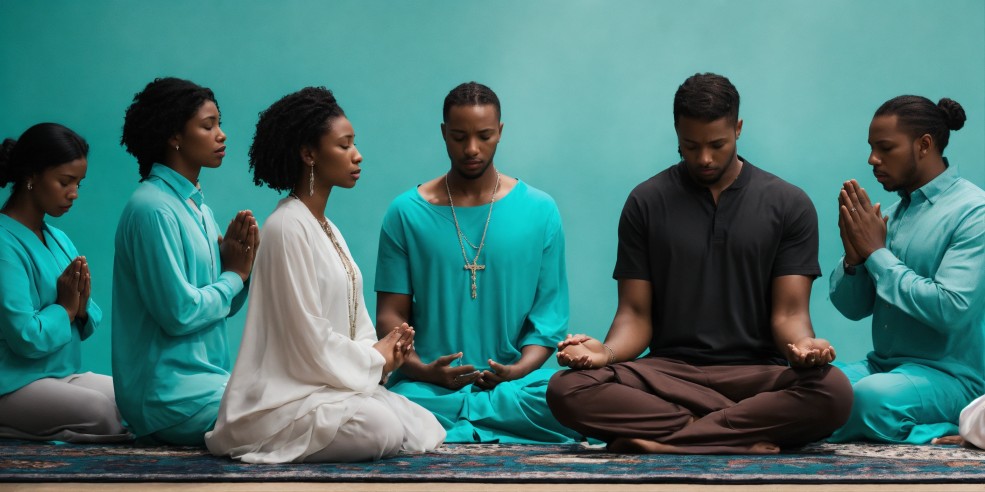Yoga has a traditional history; it is an ancient practice founded on India’s sumptuous traditions. However, such activity has phenomenally changed in a very modern sense over the last century.
This is done through the principles of yoga, but this mostly performed differently these days although it tried to emulate a trend that remained true.
For example, back in the day, yoga was meditation and ones main focus was ascension to a new level of spiritual reality.
In today’s generation, yoga is the only thing that can be used to maintain physical health and fitness.
Today I will explain modern Yoga and the reason for its popularity from a few hundred years ago until today.
The Evolution of Yoga
Yoga originated in ancient India more than 5,000 years ago, a spiritual practice that focused on connecting the mind, body, and spirit.
The original purpose of yoga was to help practitioners achieve enlightenment and inner peace. However, yoga changed dramatically in the early 20th century, especially in the West.
Pioneers such as Tirumalai Krishnamacharya, B.K.S. Iyengar, and Pattabhi Jois brought Hatha yoga to the global stage, placing a greater emphasis on physical postures (asanas), which now form the basis of modern yoga practices.
The Rise of Modern Yoga Styles
Nowadays, modern yoga comes in a variety of forms, each catering to different lifestyles, fitness levels and preferences.
To meet the demands of a fast-paced world, these styles combine traditional asanas with contemporary innovations. Some of the currently popular yoga methods are:
- Vinyasa Proportions: Vinyasa yoga, known for its dynamic flow of postures that are in sync with the breath, offers a more light and nimble approach to traditional postures. It appeals to people who are looking for a workout that balances flexibility and strength.
- Power yoga: Power yoga, a more athletic version of Vinyasa yoga, emphasizes endurance and strength. It’s very popular in fitness-oriented communities.
- Hot yoga: Hot yoga is done in a heated room to sweat, detoxify, and increase flexibility. Bikram yoga, a subset of hot yoga, is a specific cycle of 26 postures performed in a heated environment.
- Restorative yoga: Restorative yoga uses blankets and bolsters to support the body in comfortable postures. Its goal is stress relief and rehabilitation, making it a good modern option for busy lifestyles.

The Role of Technology in Modern Yoga
In the digital age, technology has contributed significantly to making yoga more accessible to an international audience.
The form of yoga practice people take has changed with online platforms, apps and virtual classes. Apps like YogaGlo, Alo Moves and YouTube channels dedicated to yoga allow enthusiasts to access classes anytime and anywhere.
Wearable fitness trackers are also now available to help practitioners monitor their progress, from tracking heart rate to measuring improvements in flexibility. The use of technology enhances the experience, so yoga is more interactive and personal.
Yoga as a Fitness Trend
Current yoga is increasingly associated with fitness, while traditional yoga is focused on achieving spiritual balance.
Nowadays, it is common to see sessions in yoga studios combining yoga with other fitness exercises such as Pilates, strength training or even high-intensity interval training (HIIT).
Yoga as a fitness trend has been further fueled by social media. Fitness enthusiasts and influencers often post advanced yoga and asana exercises, inspiring others to practice.
This visual appeal has transformed yoga into a lifestyle practice that enhances mindfulness, flexibility and strength.
Inclusivity in Modern Yoga
Inclusivity is one of the most important qualities of yoga today. Yoga is no longer a common practice for many people. Instead, it has become a welcoming space for all ages, skin tones, and backgrounds.
Chair yoga, accessible yoga, and adaptive yoga work for people with physical challenges or reduced mobility ensuring that the benefits of yoga are available to everyone.
Current yoga has also become a platform for body positivity, mental health advocacy, and self-acceptance. Many practitioners who promoted yoga as a way to control stress, anxiety, and depression now use it as a tool for self-care and mental health.
The Impact of Modern Yoga on Health and Well-Being
Modern yoga offers many health benefits beyond flexibility and strength. Studies have shown that regular yoga practice can improve heart health, reduce stress, increase mindfulness and lead to better sleep.
Also, its comprehensive approach covers both the mind and the body, giving a comprehensive approach to health.
Yoga studios and wellness centres focus more on mental health. They offer meditation exercises, breathing practice workshops and techniques for developing thinking abilities in addition to traditional asana practices.
This integration shows the versatile potential of modern yoga in solving today’s health problems.

Sustainability and Eco-Friendly Yoga Practices
Current yoga has turned to sustainability in an age of environmental consciousness. Many yoga brands now make durable yoga mats, sustainable clothing and biodegradable yoga props.
Practitioners are infusing their lifestyles with the “ahimsa” or non-harming yoga principle, making them more conscious of their environmental impact.
Yoga studios are also adopting environmental approaches, such as using renewable energy, reducing plastic use and supporting local communities through sustainability-focused charity events and yoga retreats.
The Future of Modern Yoga
Yoga is changing as the world changes. Future trends indicate a rise in personalized yoga experiences, where machine learning and artificial intelligence may contribute to creating personalized yoga plans.
Virtual reality yoga classes may make people more motivated to practice in simulated environments such as tranquil forests or beaches.
Furthermore, the popularity and reach of modern yoga will continue through community-driven practices and healthcare professionals, yoga teachers, and wellness brands.
Conclusion
Modern yoga is proof of the flexibility and adaptability of this ancient practice. As it evolves, it retains its core principle of promoting harmony, balance and peace of mind.
Modern yoga offers something for everyone, whether you are looking to improve physical fitness, clear your mind or calm your soul.
Modern yoga has established itself as an important practice for health and wellness in today’s world by embracing both tradition and innovation.
